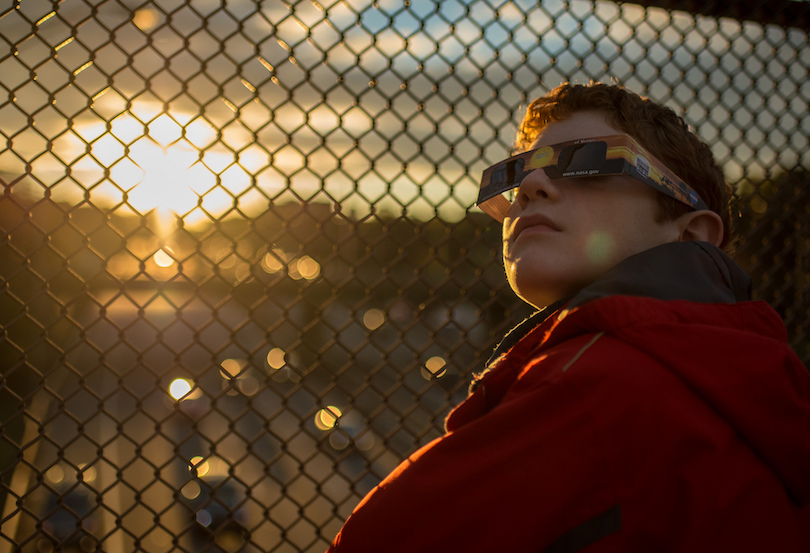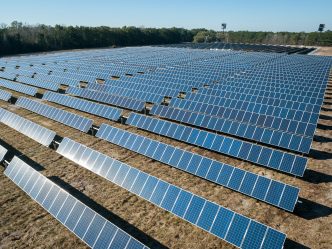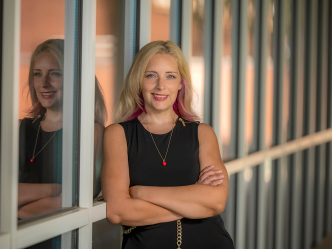Dr. Ryan Tanner in the Department of Chemistry and Physics in the College of Science and Mathematics at Augusta University offers solutions for watching the once-in-a-lifetime eclipse without damaging the unprotected eye.
As viewing a solar eclipse is a once in a lifetime opportunity, it is important to prepare to safely view the eclipse. While a total solar eclipse is safe to view without a filter, it will only last one or two minutes.
Leading up to the total eclipse the moon will only partially cover the sun. Even with 99% of the sun covered by the moon, the visible portion of the sun is bright enough to cause damage to an unprotected eye. Both before and after the total eclipse—or in Augusta or anywhere else outside the path of totality—it is still possible to view the partial eclipse safely as long as the sun’s light is properly filtered. Consider one of these four options for viewing the eclipse safely.

Eclipse Glasses
There are four manufacturers whose handheld filters and eclipse glasses are confirmed to meet the international standard (ISO 12312-2) for safely viewing the sun.
- American Paper Optics
- TSE 17
- Thousand Oaks Optical
- Rainbow Symphony
These filters should transmit less than 0.001% of the visible light of the sun. They should also block all harmful UV rays. Normal sunglasses, even polarized sunglasses, do not provide enough protection to safely view a partial eclipse. If you can see any light through the filter in a brightly lit room it will not provide enough protection. A welder’s mask or googles with a shade number 14 can provide enough protection to safely view the eclipse.
Filtered Binoculars or Telescope
If you plan on viewing the eclipse through binoculars or a telescope, you must take extra precautions since the lenses will significantly increase the intensity of the light, which can cause severe and permanent damage to your eyes. Securely fasten the filter on the end pointed at the sun. If the filter is placed after the lenses, the sun’s rays may burn through the filter leaving you unprotected. The filter should always come first. Check carefully that filters are firmly in place, unbroken, and unscratched before looking through a telescope or binoculars.
When viewing the sun directly, always remember, filter first. A good practice is to place the filter or solar glasses in front of your eyes before turning to view the sun. The filter should be in place before looking at the sun. Then turn away from the sun before removing the filter. If using binoculars or a telescope, the filter should come first. The sun’s light should pass through the filter first, and then through the lens of the binoculars or telescope.
Pinhole Projector
A much more common way of viewing an eclipse is indirectly by projecting an image of the sun onto a white piece of paper or a flat surface. The easiest indirect method is called the “pinhole method”. Simply punch a small hole in a piece of paper or cardboard, hold it up and let the light through the pinhole project onto another piece of paper or any flat surface. Bringing the two pieces of paper closer together will make the image brighter, moving them away from each other will make the image larger, but dimmer. The smaller the hole the sharper the image will be. Note, never look at the sun through the pinhole! This is only useful for indirectly viewing the eclipse.
Magnified Projection
A similar method can be used to view a magnified image of the eclipse. Using a pair of binoculars, a telescope, a magnifying glass, or any lens, you can focus a magnified image of the sun onto any flat surface. It is recommended that you use a stand or tripod to hold the binoculars or lens to make it easier to focus the image. You will need to adjust the distance between the lens and the flat surface until a round image of the sun appears. If the light is focused into a single point then the lens is too close to the flat surface. Note, never look at the sun through a lens without a filter in place.
 Augusta University
Augusta University




